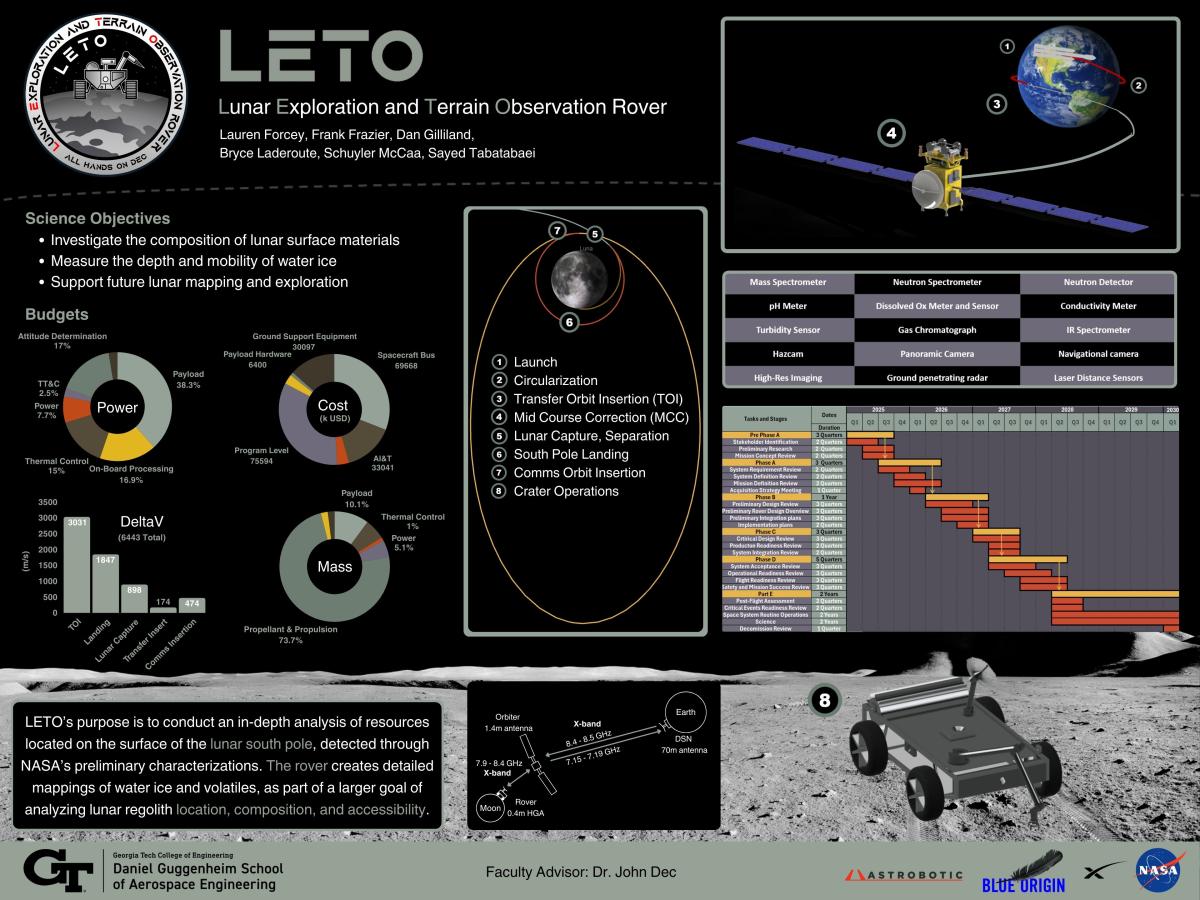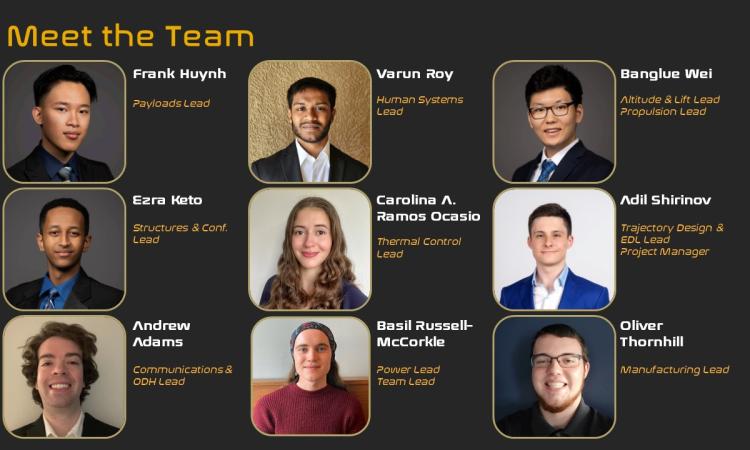Students investigate the moon’s south pole to find water ice
From left to right: Frank Frazier, Schuyler McCaa, Dr. John Dec (faculty advisor), Daniel Gilliland, Bryce Laderoute, Lauren Forcey, and Sayed Tabatabaei
Team All Hands on Dec is on a mission to uncover the mysteries of the moon. The team won $1,000 and the top honors for Best Aerospace Engineering (AE) project at Georgia Tech’s Fall 2024 Capstone Design Expo held in the McCamish Pavilion on December 2.
Altogether, 107 student-led teams from nine schools and three colleges showcased their design projects to 120 judges and crowds of onlookers.
All Hands on Dec team members Lauren Forcey, Frank Frazier, Daniel Gilliland, Bryce Laderoute, Schuyler McCaa, and Sayed Tabatabaei were among eight aerospace teams vying for the best AE project.
Inspired by NASA’s Revolutionary Aerospace Systems Concepts – Academic Linkage (RASC-AL) competition prompt, the team's objective was to conceptually conduct a detailed analysis of the resources at the moon's south pole and the composition of its lunar regolith using a rover and an orbiter. They aimed to measure the depth and mobility of water ice as well. While lunar regolith exists across the entire moon, the poles offer the best location to collect samples, due to their reduced exposure to light. This lack of light helps preserve water, ice, and other volatile materials, which would otherwise be dissipated by sunlight. Their project complements and enhances the work of NASA’s Lunar Reconnaissance Orbiter.

Winners Circle. From left to right: Professor Joe Oefelein, Bryce Laderoute, Lauren Forcey, Sayed Tabatabaei, and Buzz
I'm extremely proud of Lauren and her team. They worked diligently over the last two semesters transforming their ideas into a feasible space mission design concept. Winning the aerospace category at the Design Expo highlights the teams hard work and demonstrates how the team has taken the knowledge they gained throughout their undergraduate years and put it into practice.
Professor of the Practice John Dec
Their rover Lunar Exploration and Terrain Rover (LETO) will deploy from Falcon Heavy and land on the moon’s south pole. The rover will include an arm that will reach down and grab the lunar material and put it in a funnel. Once the material goes into the funnel, it will be analyzed using state-of-the-art science instrumentation such as mass and neutron spectrometers, neutron detectors, radars, pH and conductivity meters, and turbidity sensors.
The communications architecture features an orbiter that acts as a relay between LETO on the moon and the communication system on Earth, using NASA’s Deep Space Network. The orbiter will deploy into its communications orbit and use a high-gain antenna to transmit large amounts of data back to Earth with a focused signal at a fast rate, using telemetry.
In addition to analyzing volatiles, LETO would support future lunar mapping and exploration missions, using navigational cameras, hazard avoidance camera, high-resolution imaging, and panoramic cameras.
The team’s biggest challenge was determining team talents and interests and then dividing the work.
“I thought in senior design you could pick your teams, but I'm glad that we all came together because I've made a lot of friends out of this. I absolutely loved working with the team, and I'm so grateful that senior design allowed us to all get to know each other,” Forcey shared.

Poster
Related Stories

Team OARS Voted Best Aerospace Engineering Project at Spring 2024 Capstone Expo
Team Orbital Anomaly Recovery System (OARS), a five-person team sponsored by Intelsat, won the most outstanding aerospace engineering project at Georgia Tech’s Spring 2024 Capstone Design Expo.

AE Winning Capstone Team Will Unlock the Mysteries of Venus
RHEIA2, a nine-member team on a mission to investigate Venus, landed the Aerospace Engineering Best Fall 2023 Capstone Design title and a $1,000 award at McCamish Pavilion.
(text and background only visible when logged in)
